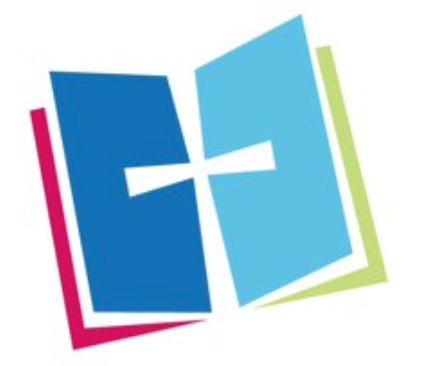It’s back to school time. For much of the country, Labor Day officially signaled the end of those lazy summer beach days. Students of all ages across the country are again worried about grades and homework. For many, school began a few weeks ago.
In the Northeast, where most of the major news organizations are located, schools opens this week. That means readers are seeing lots of back-to-school stories.
These features typically range from the mundane (which notebooks are in style this year) to scary (involving enhanced security following a summer of mass shootings). There are also plenty of stories regarding the cost of books and supplies — something that seem to rise in cost each year.
In New York City, where I live, there are roughly 1.1 million students who attend public school when counting kindergarten through high school. Students who attend private schools and Charter ones make up about a quarter of the total number of the 1.24 million children who call one of the city’s five borough’s home.
That’s a significant part of the larger story. Yet Catholic schools — religious schools in general — are usually lost in the back-to-school news frenzy.
The bottom line: The Catholic church has done a lot for education in New York and indeed across the country and around the world. Catholic schools don’t get much coverage — in New York or elsewhere — unless the news involves clergy sex abuse.
That’s unfortunate because Catholic education continues to be an important resource and major factor in the lives of so many families. As we approach the start of school, here are a few story ideas editors and education beat reporters should ponder:
Book debate: Catholic schools have the right to choose which books their libraries carry. While not necessarily a trend, it’s worth noting that a Catholic school in Tennessee recently banned the Harry Potter book series. The Tennessean first reported that St. Edward Catholic School in Nashville “can no longer checkout the popular Harry Potter book series from their school’s library.”
Here’s what the Rev. Dan Reehil, a pastor at the Roman Catholic parish school, wrote in an email to parents:
“These books present magic as both good and evil, which is not true, but in fact a clever deception. The curses and spells used in the books are actual curses and spells; which when read by a human being risk conjuring evil spirits into the presence of the person reading the text,” the email states.
It’s worth noting that other Christian denominations have had issues with Harry Potter in recent years. Here’s a good primer CBN.com put together that could be used a a resource for journalists.
Government Oversight: In New York, a proposed state policy that would give public school districts oversight of private schools (including Catholic ones) has gotten very little news coverage. The new regulation, proposed in May, would be put in place so “students attending non-public schools receive substantially equivalent instruction” as their peers in district schools.
The Catholic League, in an Aug. 28 news release, made a big fuss of the proposal:
Indeed, given how some Catholic schools, particularly in low income communities, outperform their public school counterparts, perhaps it is the Catholic school administrators who should be overseeing the public schools.
That of course, would never happen — and shouldn’t, given the religious mission of Catholic schools. But the double standard in New York State education policy is glaring. Constantly, we are told that the state can in no way — even indirectly — financially assist the families of Catholic school children, without violating the “separation of church and state.” Yet now the state presumes to intrude directly into the classrooms and administration of our Catholic schools, in order to fix a problem that does not exist.
This is a fight that will certainly intensify over the coming weeks and months. Political reporters need to keep a particularly close eye on it, without forgetting that there is a “religious side” to this issue.
School closings: Many schools have closed in recent years across the country, largely due to dwindling enrollment. The Archdiocese of New York decided earlier this year to close seven schools, meaning that the educational landscape could be forever altered going forward.
Check out these national statistics, as reported by NJ.com this past June:
In the early 1960s, parochial education was at its peak in the U.S. with more than 5 million students enrolled in nearly 13,000 Catholic schools nationwide.
Since then, enrollment has fallen steadily as church attendance has dropped and more families bypass Catholic schools in favor of public schools. Last year, only about 1.8 million students enrolled in less than 6,300 schools, according to the National Catholic Educational Association’s annual report.
What does this all mean for the affected cities and neighborhoods in question? Again, it requires getting into these neighborhoods and asking lots of questions. It’s the stuff that makes local journalism, the type that’s unfortunately going extinct in much of the country. Even in New York City, where there are three daily newspapers, these type of stories can often get lost.
Teacher misconduct: This is an issue the mainstream press doesn’t shy away from when it comes to a teacher fired from a Catholic school for living a lifestyle contrary to the church’s teachings. It’s the type of stuff that gets used in op-ed pieces, like the one from this past Sunday in The New York Times under the headline “Why people hate religion.”
In it, the writer Timothy Egan uses this example when largely trashing evangelicals and Catholics:
What you hear about are the modern Savonarolas. In Indiana this summer, Archbishop Charles C. Thompson stripped a Jesuit prep school of its Catholic identity for refusing to fire a gay, married teacher. The same threat loomed over another Indianapolis school, until it ousted a beloved teacher with 13 years of service. He was fired for getting married to another man — a legal, civil action.
The archbishop claimed he was upholding Catholic teaching, an example of the kind of selective moral policing that infuriates good people of faith.
Catholic teaching also frowns on divorce. But when a divorced teacher, at the same school where the gay teacher was fired, remarried without a church-sanctioned annulment and posted her status on Facebook as a dare, the archbishop did nothing. For this is a road that leads to thrice-married, politically connected Catholics like Newt Gingrich, whose wife Callista (with whom Gingrich carried on an adulterous affair before getting married) is now Donald Trump’s ambassador to the Vatican.
Archbishop Thompson says he tries to be “Christ-centered” in his decisions. If so, he should cite words from Christ condemning homosexuality, any words; there are none. That may be one reason a healthy majority of Catholics are in favor of same-sex marriage, despite what their spiritual sentries tell them.
What about all those Catholic teachers who dedicate so much time and effort, at relatively low pay, to help students? You don’t hear much about those. They don’t make news, even though they make a difference. This would be a wonderful time to highlight such educators, whether they be priests, brothers, nuns or members of the laity.
There are so many issues surrounding Catholic education that news organizations of every size, from large metropolitan dailies to suburban weeklies, need to cover correctly. Back to school is the perfect time to do so.










